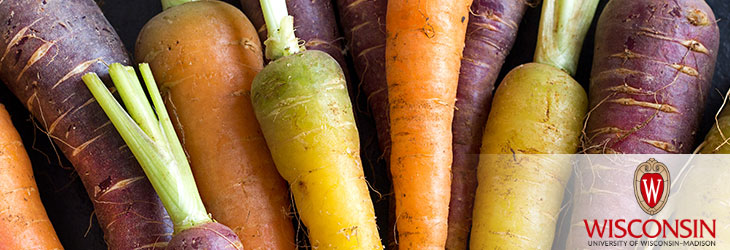Animals, Agriculture & Food

Consumer-Friendly Test for Detecting Very Small Amounts of Bacteria or Other Cells
WARF: P100326US02
Inventors: Sundaram Gunasekaran, Seok won Lim
The Wisconsin Alumni Research Foundation (WARF) is seeking commercial partners interested in developing a method for detecting extremely low levels of bacteria or other cells that is suitable for over-the-counter use by consumers.
Overview
The presence of even low levels of spoilage or pathogenic microorganisms in various products like leftover food can be dangerous and possibly lethal. However, most methods for detecting pathogens involve sophisticated techniques that are laborious, time consuming or require skilled personnel. Simple, sensitive and fast methods for detecting microorganisms that could be performed by consumers at home are needed.
Many over-the-counter tests that are currently available or in development rely on nanoparticles. In these tests, the presence of the target of interest in a sample produces a reaction in which nanoparticles bind to the target, thereby aggregating the nanoparticles. This aggregation can be detected easily through visible color changes or other means. For example, pregnancy tests depend on reactions of this type. However, using this type of reaction for visual detection of large targets like microorganisms has proven difficult.
Many over-the-counter tests that are currently available or in development rely on nanoparticles. In these tests, the presence of the target of interest in a sample produces a reaction in which nanoparticles bind to the target, thereby aggregating the nanoparticles. This aggregation can be detected easily through visible color changes or other means. For example, pregnancy tests depend on reactions of this type. However, using this type of reaction for visual detection of large targets like microorganisms has proven difficult.
The Invention
UW–Madison researchers have developed a novel method for detecting very low levels of bacteria or other cells. In this method, which is suitable for over-the-counter use by consumers, the aggregation of nanoparticles indicates the absence of the target, rather than the presence of the target as in commercially available tests.
The method uses a bifunctional linker. One portion of the linker binds to a target, while a second portion facilitates aggregation of nanoparticles. When the linker is bound to the target, little nanoparticle aggregation occurs. When the target is absent, the linker is available to facilitate aggregation of the nanoparticles. This aggregation can be observed through visual or other means, providing a simple yet sensitive method for detecting pathogenic microorganisms.
The method uses a bifunctional linker. One portion of the linker binds to a target, while a second portion facilitates aggregation of nanoparticles. When the linker is bound to the target, little nanoparticle aggregation occurs. When the target is absent, the linker is available to facilitate aggregation of the nanoparticles. This aggregation can be observed through visual or other means, providing a simple yet sensitive method for detecting pathogenic microorganisms.
Applications
- Over-the-counter detection of low levels of microorganisms or other large targets such as E. coli or Salmonella
Key Benefits
- Simple, sensitive and fast
- Capable of detecting bacteria in a sample at concentrations less than 25 cells/mL
- Suitable for over-the-counter use by consumers
- Capable of detecting targets such as cells that are much larger than the nanoparticles
- Can be designed to provide a desired level of specificity for one or more targets
- Suitable for a variety of sample types including water, food, bodily fluids and pharmaceuticals
Stage of Development
The development of this technology was supported by WARF Accelerator. WARF Accelerator selects WARF's most commercially promising technologies and provides expert assistance and funding to enable achievement of commercially significant milestones. WARF believes that these technologies are especially attractive opportunities for licensing.
Additional Information
For More Information About the Inventors
For current licensing status, please contact Emily Bauer at [javascript protected email address] or 608-960-9842